Molecular Insights into the Thrombotic and Microvascular Injury in Placental Endothelium of Women with Mild or Severe COVID-19
- PMID: 33578631
- PMCID: PMC7916402
- DOI: 10.3390/cells10020364
Molecular Insights into the Thrombotic and Microvascular Injury in Placental Endothelium of Women with Mild or Severe COVID-19
Abstract
Clinical manifestations of coronavirus disease 2019 (COVID-19) in pregnant women are diverse, and little is known of the impact of the disease on placental physiology. Severe acute respiratory syndrome coronavirus (SARS-CoV-2) has been detected in the human placenta, and its binding receptor ACE2 is present in a variety of placental cells, including endothelium. Here, we analyze the impact of COVID-19 in placental endothelium, studying by immunofluorescence the expression of von Willebrand factor (vWf), claudin-5, and vascular endothelial (VE) cadherin in the decidua and chorionic villi of placentas from women with mild and severe COVID-19 in comparison to healthy controls. Our results indicate that: (1) vWf expression increases in the endothelium of decidua and chorionic villi of placentas derived from women with COVID-19, being higher in severe cases; (2) Claudin-5 and VE-cadherin expression decrease in the decidua and chorionic villus of placentas from women with severe COVID-19 but not in those with mild disease. Placental histological analysis reveals thrombosis, infarcts, and vascular wall remodeling, confirming the deleterious effect of COVID-19 on placental vessels. Together, these results suggest that placentas from women with COVID-19 have a condition of leaky endothelium and thrombosis, which is sensitive to disease severity.
Keywords: COVID-19; VE-cadherin; claudin-5; endothelium; placenta; von Willebrand factor.
Conflict of interest statement
The authors declare no conflict of interest. The funders had no role in study design, data collection, analysis, decision to publish, or manuscript preparation.
Figures
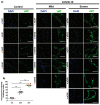
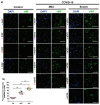
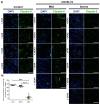
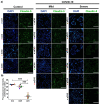
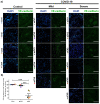
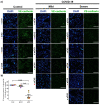


Similar articles
-
Association Between COVID-19 Pregnant Women Symptoms Severity and Placental Morphologic Features.Front Immunol. 2021 May 26;12:685919. doi: 10.3389/fimmu.2021.685919. eCollection 2021. Front Immunol. 2021. PMID: 34122449 Free PMC article.
-
Hofbauer Cells and COVID-19 in Pregnancy.Arch Pathol Lab Med. 2021 Nov 1;145(11):1328-1340. doi: 10.5858/arpa.2021-0296-SA. Arch Pathol Lab Med. 2021. PMID: 34297794
-
COVID-19 as an independent risk factor for subclinical placental dysfunction.Eur J Obstet Gynecol Reprod Biol. 2021 Apr;259:7-11. doi: 10.1016/j.ejogrb.2021.01.049. Epub 2021 Jan 29. Eur J Obstet Gynecol Reprod Biol. 2021. PMID: 33556768 Free PMC article.
-
Meta-analysis on COVID-19-pregnancy-related placental pathologies shows no specific pattern.Placenta. 2022 Jan;117:72-77. doi: 10.1016/j.placenta.2021.10.010. Epub 2021 Oct 19. Placenta. 2022. PMID: 34773743 Free PMC article.
-
Histological and immunohistochemical features of the placenta associated with COVID-19: a systematic review and meta-analysis.Wiad Lek. 2024;77(7):1434-1455. doi: 10.36740/WLek202407120. Wiad Lek. 2024. PMID: 39241144
Cited by
-
Severe Acute Respiratory Syndrome Coronavirus 2 Infection in Pregnancy. A Non-systematic Review of Clinical Presentation, Potential Effects of Physiological Adaptations in Pregnancy, and Placental Vascular Alterations.Front Physiol. 2022 Mar 30;13:785274. doi: 10.3389/fphys.2022.785274. eCollection 2022. Front Physiol. 2022. PMID: 35431989 Free PMC article. Review.
-
Functional consequences of SARS-CoV-2 infection in pregnant women, fetoplacental unit, and neonate.Biochim Biophys Acta Mol Basis Dis. 2023 Jan 1;1869(1):166582. doi: 10.1016/j.bbadis.2022.166582. Epub 2022 Oct 20. Biochim Biophys Acta Mol Basis Dis. 2023. PMID: 36273675 Free PMC article. Review.
-
Trends in the Incidence of Hypertensive Disorders of Pregnancy Among the Medicaid Population before and During COVID-19.Womens Health Rep (New Rochelle). 2024 Sep 6;5(1):641-649. doi: 10.1089/whr.2024.0045. eCollection 2024. Womens Health Rep (New Rochelle). 2024. PMID: 39346805 Free PMC article.
-
Maternal COVID-19 Vaccination and Its Potential Impact on Fetal and Neonatal Development.Vaccines (Basel). 2021 Nov 18;9(11):1351. doi: 10.3390/vaccines9111351. Vaccines (Basel). 2021. PMID: 34835282 Free PMC article. Review.
-
A focused review on technologies, mechanisms, safety, and efficacy of available COVID-19 vaccines.Int Immunopharmacol. 2021 Nov;100:108162. doi: 10.1016/j.intimp.2021.108162. Epub 2021 Sep 17. Int Immunopharmacol. 2021. PMID: 34562844 Free PMC article. Review.
References
Publication types
MeSH terms
Substances
Grants and funding
LinkOut - more resources
Full Text Sources
Other Literature Sources
Medical
Miscellaneous

